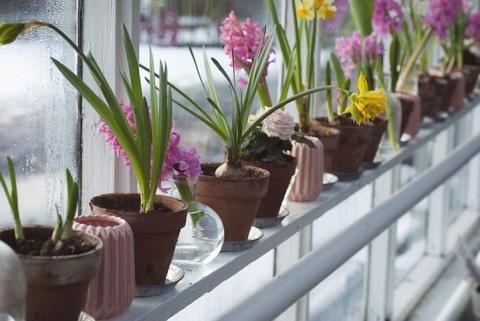How can I insulate my unheated greenhouse during the winter?

Many tender perennials can be held over the winter so long as they are kept above freezing in a brightly lit spot. Even an unheated greenhouse can provide the perfect conditions for overwintering herbs such as lavender, sage and rosemary provided it is properly located and insulated.
All well-constructed greenhouses allow solar radiation to enter during the day. In the winter, the trick is holding onto that solar energy during long, cold nights. Ceramic tiles, stones, potting soil and water all absorb solar heat on sunny days. When the temperature drops at night, heat radiates out of these materials back into the greenhouse, moderating the temperature. Increasing passive heat storage is a great way to optimize growing conditions. If space allows, try storing water in large plastic barrels or one gallon milk jugs to conserve heat and help warm the greenhouse. To be most effective, these containers should be placed in spots that receive direct sun.
Beyond storing solar heat, one of the most important things you can do is seal up all gaps and cracks in the greenhouse. Use caulk or weather stripping to stop heat from escaping, particularly around doors, joints, and vents. Once all gaps have been sealed, consider installing insulation. A great low-tech option is to fit rigid foam panels on glass panes and doors overnight. Use Velcro to keep the Styrofoam in place. Although this method is labor intensive, it may help save your plants, especially during the coldest nights of the year.
This was your Question of the Week. Got questions? The Ask UNH Extension Infoline offers practical help finding answers for your home, yard, and garden questions. Call toll free at 1-877-398-4769, Monday to Friday, 9 a.m. to 2 p.m., or e-mail us at answers@unh.edu.
